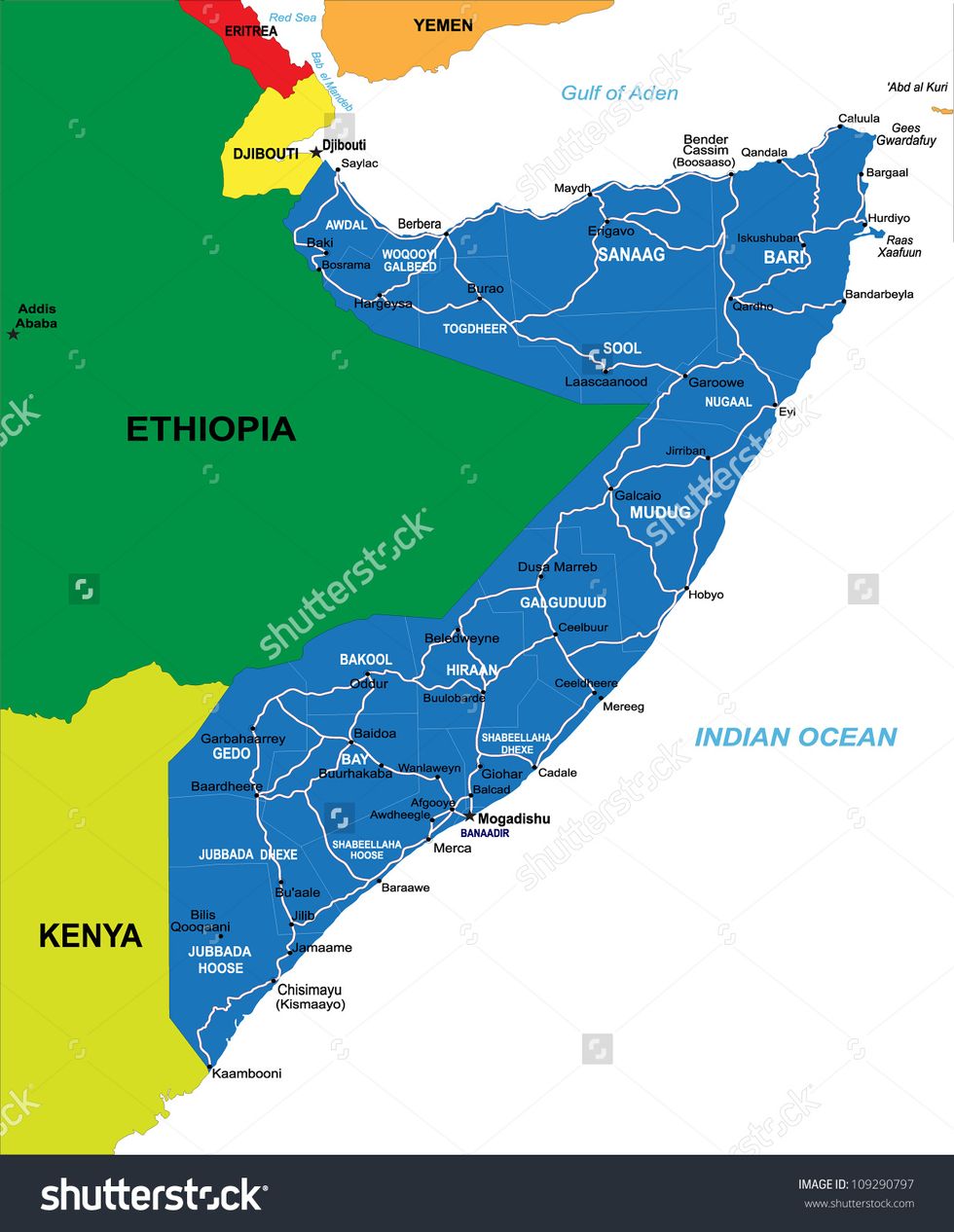I apologize to my readers for my extended absence I have been working on other projects that will hopefully be ready to share with you guys soon. For the foreseeable future, I will be back to provide commentary with minimal bias on world events. Now that the housekeeping is out of the way we will get back to our usual format for a hopefully recurring segment called terrorist round-up where we look at the different terrorist organizations around the globe and look past just the headlines.
Al-Shabaab
The area of Somali was originally colonized by Italy and Britain for its strategic access to Straight of Malacca, an important route for commerce. In 1960 the colonies of British and Italian Somaliland were united to form the Somali Republic. In 1969 the prime minister was assassinated, and the government was taken over in a coop. The new government was an authoritarian socialist government with a focus on the countries Muslim roots, including Muslim tenants of social progress, equality, and justice. The country became more aggressive claiming land in Ethiopia and by the 80s cracked down on its people causing the growth of resistance movements, many aided by Ethiopia. Crack downs continued until 1991 when the government was ousted by a coalition of tribal groups. The country quickly was engulfed in civil war. In 1993 the United Nations began a humanitarian mission and in October was the Battle of Mogadishu, the basis for the movie Black Hawk down. After wards, the US said it would be out of Somalia in 6 months, and all of the UN force had withdrawn by March of 1995. In 2000 The Transitional National Government was formed, they eventually held elections for prime minister, formed a parliament, and legislature. The United States began conducting operations in Somalia in 2003 after integrations led to intelligence that Al Qaeda planned to move to the Somalia or Yemen if they were pushed out of their stronghold in Afghanistan. US operations began with collection missions Cobalt Blue and Poison Scepter in November of 2003. They also assembled Task Force Orange to work with local warlords to track Al Qaeda operating in East Africa and to discover how they collaborated with the larger Al Qaeda. These warlords also were used to capture Al Qaeda operatives.
In 2006 the Islamic Courts Union (ICU), a collection of Muslim courts, captured most of Sothern Somalia defeating the warlords controlling the area.Their goal was to form a government to rival the internationally created government. With the Aid of Ethiopia forces and US ISR, the ICU was pushed out of its strong holds and forced into rural regions. This led to a split within the ICU for those who wanted to reconcile with the government and those who want to continue a guerilla war. The former signed a power sharing deal with the government and gained six seats in parliament; the later became Al Shabab, the youth.
After the foreign intervention, the once fringe Al Shabab quickly grew in popularity. Beginning in 2007 the United States began conducting air strikes in Somalia focusing on High-value targets and training facilities.By 2008 Al Shabab was designated a terrorist organization by the U.S. State Department and the US ramped up drone strikes in Somalia which continue to today. Strikes were said to be justified by the 2001 AUMF. After years of air strikes Al Shabab pledged allegiance to Al Qaeda in 2012 and shortly after that it conducted its most deadly attack on a mall in Kenya. Since 2015 there has been much in-fighting over whether Al Shabab should to pledge allegiance to ISIS or stay allied to Al Qaeda, finally in October 2016 the faction of Al Shabab wanting to align with ISIS broke off and focused on Puntland, a semi-autonomous region in northern Somalia.Beginning in 2017 Al Shabab changed tactics and began to conduct raids on Somali military basis by overrunning them with sheer numbers and making off with large caches of weapon and equipment. Since March 2017, Airstrikes have increased under the expanded authorities granted to the Pentagon.Somalia continues to be a region in need of foreign aid until it can stabilize and prevent jihad ideologies to take root.
If you want to read more of my other articles, you can here or follow me on Twitter. Please stop by next week for more articles on news, economics and international affairs only available at Odyssey.
















